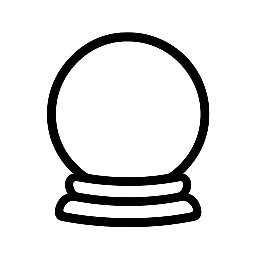Welcome to the world of tarot, a realm of mystique, self-discovery, and intuition. For beginners, the concept of tarot can seem daunting, with its multitude of symbols, cards, and spreads. However, with the right guidance, anyone can learn to navigate the tarot universe and unlock its secrets. In this article, we will explore the basics of tarot, including how to choose the right deck, learn the cards, and start reading.
Choosing the Right Tarot Deck
With so many tarot decks available, selecting the right one can be overwhelming. Here are a few tips to help you make an informed decision:
- Consider your personal style: Tarot decks come in various themes, from traditional to modern, fantasy to minimalist. Choose a deck that resonates with your aesthetic and personality.
- Look for a deck with clear imagery: A deck with clear, concise images will make it easier for you to interpret the cards and connect with their symbolism.
- Read reviews and ask for recommendations: Research different decks and ask for advice from experienced tarot readers or online communities.
- Start with a traditional deck: If you’re new to tarot, consider starting with a traditional deck, such as the Rider-Waite or Marseille, as they provide a solid foundation for learning.
Learning the Tarot Cards
The tarot deck consists of 78 cards, each with its unique symbolism, meaning, and story. To get started, focus on learning the basics of the following:
- The Major Arcana: These 22 cards represent major life themes, transitions, and archetypes. Examples include the Fool, the Magician, and the Death card.
- The Minor Arcana: These 56 cards are divided into four suits (Wands, Cups, Swords, and Pentacles) and represent everyday situations, emotions, and experiences.
- Court cards: The 16 court cards (Page, Knight, Queen, King) represent different personality types, roles, and relationships in your life.
Here are some tips for learning the tarot cards:
- Start with the basics: Begin by learning the names, symbols, and basic meanings of each card.
- Use a tarot guidebook or online resource: Reference a guidebook or online resource to deepen your understanding of each card’s meaning and interpretation.
- Practice, practice, practice: The more you work with the cards, the more familiar you’ll become with their meanings and symbolism.
Starting Your Tarot Reading Journey
Now that you’ve chosen your deck and started learning the cards, it’s time to begin reading. Here are some steps to get you started:
- Set your intention: Define what you want to achieve through tarot reading, whether it’s self-discovery, guidance, or insight into a specific situation.
- Create a peaceful reading space: Find a quiet, comfortable spot where you can focus and connect with the cards.
- Shuffle and cut the deck: Develop a shuffling technique that works for you, and cut the deck to create a random selection of cards.
- Start with simple spreads: Begin with basic spreads, such as a three-card spread (past-present-future) or a Celtic Cross spread, to help you understand the cards and their relationships.
Remember, tarot reading is a skill that takes time and practice to develop. Be patient, stay open-minded, and trust your intuition as you embark on this journey of self-discovery and growth.
Conclusion
Tarot for beginners may seem intimidating, but with the right guidance and mindset, anyone can learn to navigate the tarot universe. By choosing the right deck, learning the cards, and starting your reading journey, you’ll be well on your way to unlocking the secrets of tarot and discovering the insights and guidance it has to offer. Happy reading!


Leave a Reply